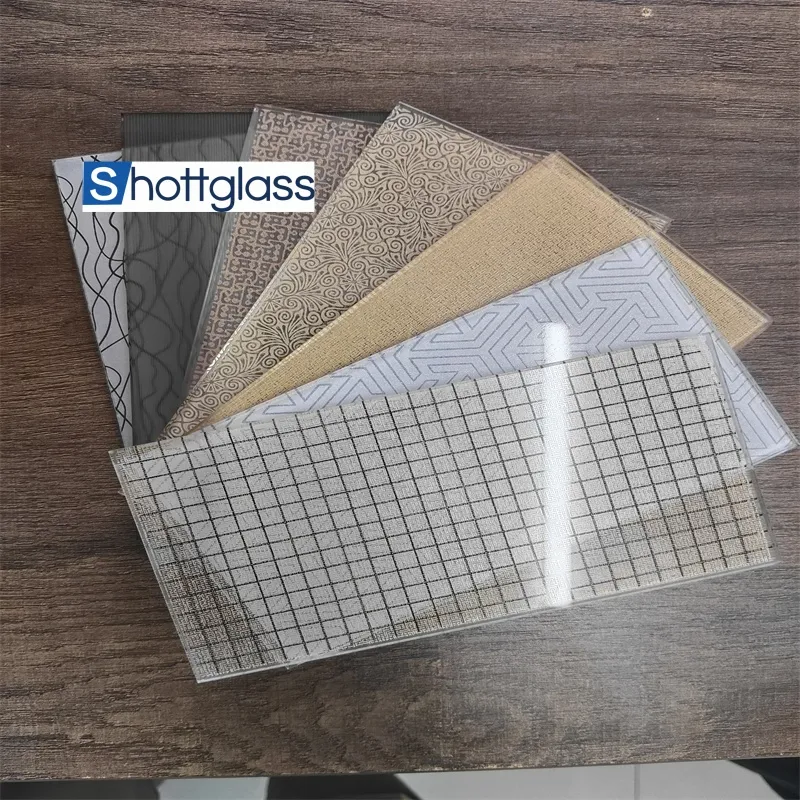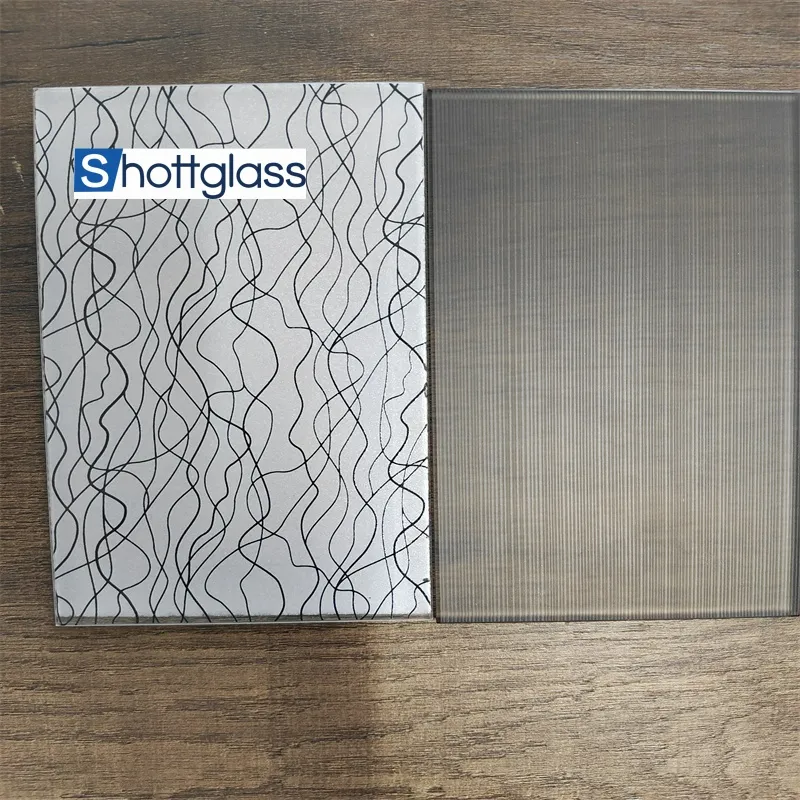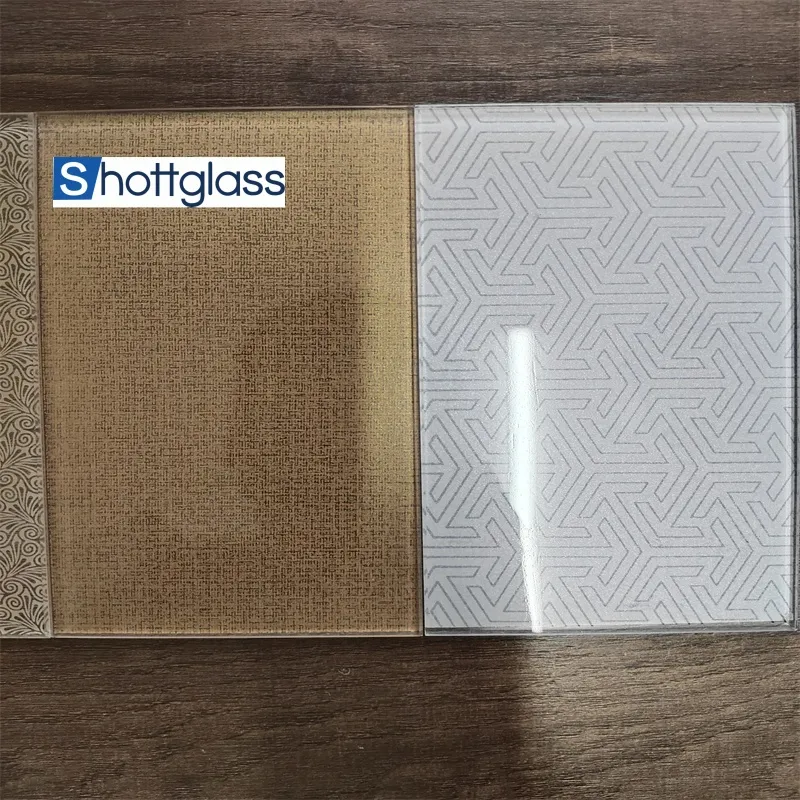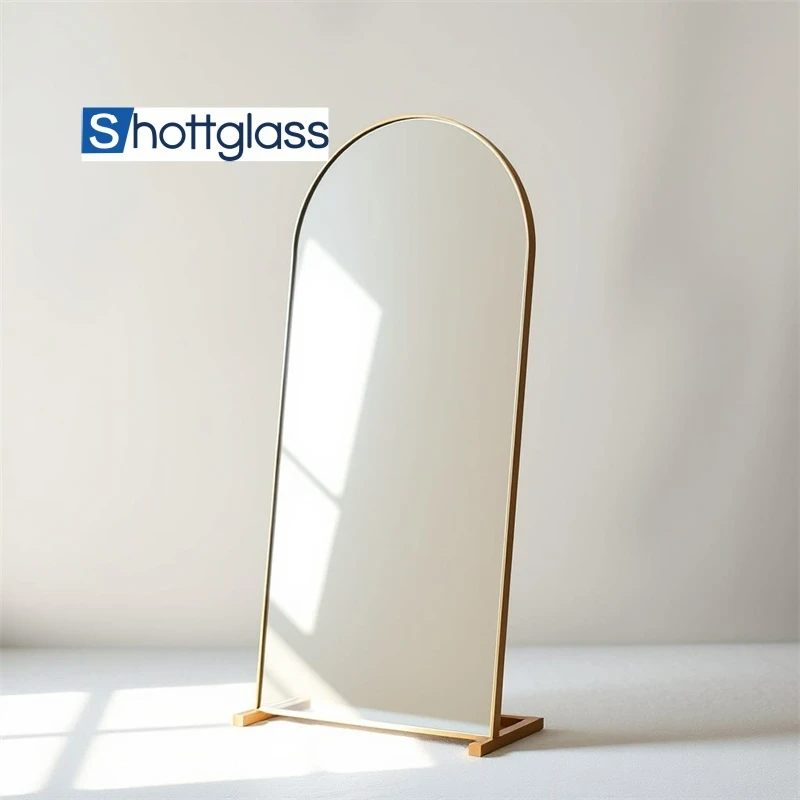Jul . 28, 2025 15:01 Back to list
Special Glass Factory: Custom Special Glass Types & Cutting Solutions
In the dynamic world of specialty glass, manufacturers and end-users are turning to special glass factory solutions to meet the demanding needs of modern engineering, architecture, and industrial production. This article, leveraging real data, industry certifications, and customer case studies, presents an in-depth review of special glass types, technical parameters, cutting-edge manufacturing, and the application value of Ceramic Fritted Glass.

1. Industry Trends in Special Glass and Key Types
The special glass market reached a global value of $86.6 billion in 2023 (MarketsandMarkets, 2023), growing at CAGR 6.3%. Special glass includes advanced varieties such as Ceramic Fritted Glass, borosilicate glass, laminated glass, toughened glass, and chemically strengthened glass, each engineered for high performance in selective environments.
| Type | Major Components | Features | Typical Application |
|---|---|---|---|
| Ceramic Fritted Glass | Silica, Alumina, Calcium, Ceramic Oxides |
High corrosion/abrasion resist, Customizable print pattern, UV stable | Facade, Curtain wall, Chem tanks, Water treatment |
| Borosilicate | B2O3, SiO2 | Thermal shock resist, chemical stable | Laboratory, Lighting, Solar |
| Toughened (Tempered) | SiO2, Na2O, K2O | High strength, safety glass | Automotive, Architecture |
| Laminated | Glass + PVB/SGP films | Impact resist, safety, sound insulation | Skylight, Security, Flooring |
2. Technical Parameters and Data dashboard
Selection of special glass factory components relies on core parameters—mechanical strength, thermal expansion coefficient, surface hardness, chemical durability, optical clarity—and their precise control by advanced manufacturing technology.
3. Core Manufacturing Process: Ceramic Fritted Glass at Special Glass Factory
Ceramic Fritted Glass is a pinnacle of special glass manufacturing. It is engineered by fusing colored ceramic frits onto glass through high-temperature sintering, yielding a surface layer with outstanding abrasion, corrosion, and UV resistance, while allowing for custom patterns and logos.

- Raw Glass Selection → Strictly controlled composition (SiO2, CaO, Al2O3)
- Glass Cutting/Pre-processing → CNC accuracy to <0.5mm, edge treatment
- Ceramic Frit Printing → Screen/roller or digital inkjet
- Drying → Pre-baking at 150-180℃
- High-Temp Firing → Kiln at 580-720℃, vitrifies ceramic frit to glass
- Inspection & Testing → Surface, adhesion (Cross-hatch, ISO 2409), acid resistance (ISO 695)
- Packing & Shipping → Anti-impact wrap, palletized export
- Standard certifications: ISO 12543-4, ANSI Z97.1, CE EN12150
- Typical yield: Defect-free rate >99.1% (2023 Factory QA Data)

4. Product Specifications & Technical Parameter Comparison
Modern special glass factory production lines enable customized geometry, precise surface decoration, and high performance. Below is a data-driven comparison of Ceramic Fritted Glass versus common special glass types:
| Parameter | Ceramic Fritted Glass | Borosilicate | Toughened | Laminated |
|---|---|---|---|---|
| Modulus of Rupture (MPa) | 110~180 | 65~120 | 100~200 | 85~120 |
| Thermal Expansion (10⁻⁶/°C) | 8.1 | 3.3 | 8.9 | 8.9 |
| Acid/Alkali Resistance (%) | >98 | >95 | 90~93 | 85~90 |
| Customizable Patterns | Yes | No | No | No |
| Visible Light Trans. | 8~92% | 89~91% | 85~91% | 75~88% |
| UV Shielding (%) | >95 | 20~30 | 35~65 | 50~68 |
| Service Life (years) | >12 | >10 | >9 | >8 |
5. Customization, Cutting, and Application Advantages
Every special glass factory must maintain accuracy in cutting, shaping, and customization. Modern special glass cutting involves high-precision CNC waterjet, laser, and diamond tools (ISO 614/614-2 compliance) to meet dimensional and tolerance requirements, offering smooth, burr-free edges and complex geometry. Pattern digitization enables project-specific logos or anti-slip dots for advanced types of special glass use.
- Edge Finish Accuracy: <0.3mm (independent test, 2024)
- Pattern Tolerance: ±0.7mm
- Minimum hole spacing (laminated): 40mm
- Panel Min/Max Size: 220x220mm ~ 3200x5800mm

6. Application Scenarios: Energy, Chemical, Water, and Green Building
- Petrochemical & Metallurgy: Chimney linings, acid tanks—long life, non-contamination, aggressive media resistance
- Water & Wastewater: Sand filters, biogas covers, Corrosion-free and low-fouling
- Facades & Architectural: Glass curtain wall, light shelves—custom patterned, UV shield, energy efficient
- Renewable Energy: Solar BIPV, wind power housings, panels
- Hospital & Pharmaceutical: Cleanroom partitions, easy to sanitize, ISO 22196 bacteria-resistant finish

7. Comparative Strengths: Selecting the Right Special Glass Factory
| Factory | Annual Output (m²) | Certification | Major Markets | Avg. Lead Time |
|---|---|---|---|---|
| ChinaMirrorGlass | 2,500,000 | ISO, CE, ANSI, SGS | Asia, EU, USA, Africa | 15-28 days |
| Guardian Glass | 1,850,000 | ISO, EN, UL | NA, EU, Middle East | 22-40 days |
| AGC Inc. | 2,950,000 | ISO, JIS, CE | Global | 28-60 days |
| Pilkington | 2,200,000 | ISO, EN | EU, South America | 18-34 days |
8. Customization Process, Quality, and Warranty Commitment
- Design Consultation → Engineering Drawing Review (ISO 9001-2015 standard)
- Sample Prototyping → On-request Testing → Approval
- Production Scheduling → Progressive QA (EN12150, ANSI, ASTM)
- Packing, Delivery, and Installation Assistance
- After-sales → 12~36 months quality warranty, customer service response <24hr
Average Lead time: 15–28 days for standard/medium runs; multi-phase delivery available for mega projects.
Customer support: Dedicated project engineer, third-party QA reporting, full documentation (ISO/FDA/SGS available).
9. FAQ: Special Glass Terminology & Professional FAQ
10. Representative Application Cases & Customer Feedback
- Chongqing Petrochemical, China: Chemically fritted tank windows, no visible corrosion after 7 years; efficiency savings estimated 12% (factory survey, 2023)
- Middle East Wastewater Treatment Plant: Ceramic fritted covers, zero maintenance failures ISO 22196 certified anti-bacteria; visual clarity maintained >95% after 5 years
- Singapore City Hall: Custom printed façade glass, energy cost reduction 8% year-on-year (empirical data, 2022–2023)
- EU Hospital Partition: Fritted glass, passes EN1279 humidity/condensation testing; no edge delamination across 4 years
11. Authority, Certification, and Key Partners
- All products certified by ISO 9001:2015, CE, EN/ANSI, and eligible for FDA use on request
- Partnered with: Aramco, Sinopec, VINCI, L&T, Siemens
- Leading supplier for global façade and chemical tank projects
12. Contact, Ordering & Support Policy
- Quotation Response: Within 12 hours (standard projects)
- Trial Orders: Accepted from 10 panels upward, full documentation
- After-sale Warranty: 24/7 support; certified site inspection available
- Documentation: Provided in English, French, Arabic, Chinese
- Factory Visits / Video Inspection: Arranged on request
- Factory-direct prices with certified standards (EN, ISO, SGS)
- Custom engineering support: BIM/CAD compatibility, on-site measuring
- 12+ years industry experience with global project portfolio
- Leading defect rate: <0.9‰ in 2023, Customer Satisfaction Index: 98.7%
- Zero product recalls in recent 6 years (public QA record)
13. Industry Reference & Further Reading
This article references market and technical data from authoritative sources. For further study, consult:
-
Types of Reflective Glass
NewsNov.17,2025
-
What Is Dichroic Glass?
NewsNov.17,2025
-
Smart LED mirrors can have touch controls
NewsNov.17,2025
-
Laminated glass improves energy efficiency
NewsNov.17,2025
-
Insulated glass enhances building comfort
NewsNov.17,2025
-
Acid etched glass offers elegant privacy
NewsNov.17,2025
Related PRODUCTS














